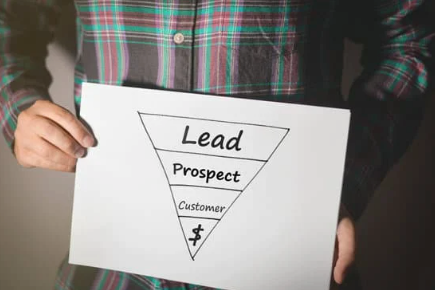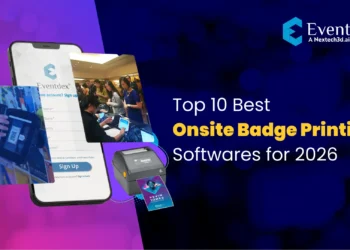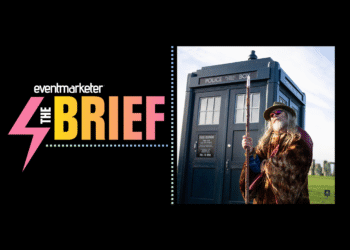In the competitive world of events, a robust sales process is more than just a series of steps – it’s the lifeblood of your business. It’s how you identify, qualify, and convert potential clients into paying customers that boost your bottom line. But even the most carefully crafted, well-intentioned sales processes can have unexpected leaks, leading to dropped leads and missed opportunities.
But never fear! In this article, we’ll explore common pitfalls that lead to dropped leads, provide strategies to identify and address these leaks, and offer best practices for optimizing your event sales process.
Planning Pod is the end-to-end digital event management solution for businesses of all shapes and sizes, and includes a full suite of tools to seamlessly manage your sales pipeline from start to finish. Get started today!
Common pitfalls leading to dropped leads
Lack of follow-up
It’s easy to get swept away by the constant influx of new leads and the demands of immediate tasks (especially during busy seasons). This can lead to unintentionally neglecting crucial follow-up activities. Always remember that consistent and timely follow-up is the cornerstone of nurturing leads and building strong relationships.
Whether it’s a simple thank-you note, a personalized email with relevant information, or a phone call to address specific questions, consistent follow-up demonstrates genuine interest in the client and keeps your brand at the top of their mind. By staying engaged and proactively addressing their needs, you build trust and increase the likelihood of converting those leads into loyal customers.
Poor communication
Clear and consistent communication is paramount in any successful business relationship, and your clients are no exception. Inconsistent communication channels (like switching between email, phone, and text messages without a clear preference) can create confusion and frustration for potential customers. On the other hand, delayed responses (regardless of the reason) can also leave a negative impression and make clients feel unimportant. And generic, mass-produced messages lack the personal touch that resonates with individual people hoping to create unique experiences.
Personalization – whether it’s addressing them by name, acknowledging their specific needs, or referencing past interactions – demonstrates genuine attention and builds a stronger connection. Effective communication fosters trust, builds rapport, and ultimately increases the chances of closing deals.
Inefficient lead qualification
Spending time and resources pursuing leads that are ultimately not a good fit for your business can be a significant drain on resources. Inefficient lead qualification processes fail to effectively assess crucial factors, like a potential client’s budget, timeline, and unique event needs. Without a thorough understanding of these factors, you risk wasting valuable time and effort on leads that are unlikely to convert.
Effective lead qualification involves asking targeted questions, conducting thorough research, and utilizing lead scoring systems to prioritize leads based on their potential value. By focusing on qualified leads that align with your ideal customer profile, you can maximize your return on investment and increase your chances of closing deals with high-value clients.

Identifying the leaks
Before you can actually plug holes in your sales process, you have to know where they are. Here are the key stages you should be analyzing in your sales pipeline:
Lead capture
How are leads discovering your business? Are they stumbling upon your website and filling out a contact form? Are they reaching out directly with inquiries via phone or email? Maybe they’re getting referred by happy customers or even finding your event business on social media. Knowing your lead sources will ensure that you don’t miss out on any good opportunities to snag them.
It’s also vital to make sure you’re collecting all the important info from each and every lead. Of course you need their contact details, but don’t forget other things like the type of event they’re interested in, how much they’re willing to spend, and when they need it all to happen. This not only helps you to understand their needs and tailor your approach from here forward, but shows the lead that you are here to thoroughly listen to what they’re looking for. It’s the foundation for a strong connection.
Lastly, you need to be completely sure that these leads are getting to the right people on your team at the right time. Nobody wants to play phone tag or get passed around like a hot potato. You need a smooth and efficient system to get your leads directly into the hands of the staff who are trained and equipped to help them.
Lead qualification
How are you deciding which leads to focus on or prioritize? Are you really digging into details like their budget, timeline for when they need things done, and what kind of event they hope to execute? This is key to making sure you’re not wasting time on leads that aren’t a good fit for your event business.
To make this even smoother, you might even consider a scoring system. This would help you automatically rank leads based on how valuable they are. For example, a lead with a large budget, a short timeline, and a complex event would probably score higher priority than someone just casually browsing. This helps you focus on the leads that are most likely to turn into actual clients.
Communication
Think about the different ways you contact your potential customers – phone calls, emails, and maybe face-to-face meetings in some cases. It goes without saying that you need to make sure you’re getting back to people promptly and in a way that’s professional and helpful. Maybe you even set specific goals for response time, like replying to emails within 24 hours. And don’t forget to personalize your messages! Tailoring your communication to the specific needs and interests of each lead shows you’re paying attention and genuinely care.
Proposal & contracting
Now it’s time for everyone’s favorite part: closing deals. Are your proposals crystal clear? Do they cut to the chase and avoid confusing jargon? You need to make sure your clients can easily understand the details of their contract with you and your team. And if a client raises concerns or has objections, be sure to not to beat around the bush. Address them directly and professionally, show them why your services are the best fit for their needs, and remember that clear is kind. Once the client is ready to sign on, you need an efficient system to gather signatures ASAP, generate an invoice, and collect a deposit. Any delays (even in this late sales stage) can kill the momentum and put the booking at risk.

Solutions and best practices
Planning Pod’s comprehensive, customizable toolset includes a full CRM suite, integrated email communications, proposal templates, task management, automated reminders, and more. Learn more here >>
Automated workflows
If you haven’t done so already, start leveraging the power of automation to maximize efficiency and ensure no leads slip away.. By integrating CRM and automation tools, you’ll streamline lead nurturing and follow-up processes. Automated email sequences can deliver targeted messages at the right time, nurturing leads throughout their buyer’s journey. Automated reminders and task assignments can help your team stay on top of crucial follow-up activities, ensuring that no opportunity is missed. This not only saves time and resources but also improves overall lead response times and conversion rates.
Improved communication
To ensure smooth collaboration and minimize miscommunications, effective communication tools are a must. Project and event management softwares typically provide a central hub for tracking progress, assigning tasks, and sharing updates with the entire team. And shared calendars offer a clear overview of everyone’s schedules, preventing scheduling conflicts and ensuring timely coordination. By utilizing these tools, you’ll enhance communication, improve transparency, and ultimately increase team efficiency and productivity.
Proposal templates & tools
No event business can survive these days without good, professional templates – especially for proposals. Whatever platform you use for your templates (and if you’re not using one yet, it’s time to start exploring), these templates should be easily customizable to fit specific client needs while maintaining a consistent brand look and feel. Even better, leveraging a software specifically designed to integrate proposals with all the other event tasks and details will significantly streamline your entire event management process. We’re talking tools that can help automate tasks, track proposal progress, and even gather client feedback, ultimately saving you time and improving the overall quality of your proposals.
Client onboarding
A smooth and efficient client onboarding process is crucial for building strong, long-term relationships that propel your business forward. To achieve this, what you need to do is develop a well-defined process that prioritizes clear and consistent communication. Regular check-ins with new clients will allow you to address any initial concerns, answer questions, and ensure they feel supported. By proactively identifying and addressing potential challenges, you’ll minimize frustrations and build a strong foundation of trust from the very beginning of your relationship with any client.
Plugging the holes in your sales process is an ongoing effort. Be sure to regularly review your sales data, analyze your performance, and identify areas for improvement. By implementing these strategies and continuously refining your approach, you can significantly reduce the number of dropped leads, increase your conversion rates, and ultimately grow your event business.
Planning Pod simplifies your entire event lifecycle. Our comprehensive platform provides the tools you need to manage your sales pipeline effortlessly, from lead capture to contract signing. Get started today!
















